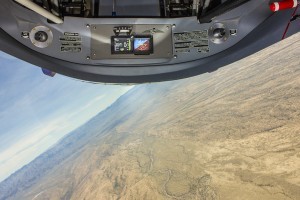In 2014, the FAA released its first Advisory Circular specifically addressing Upset Prevention and Recovery Training (UPRT). The reference discusses instructor qualification, the limits of simulator fidelity, providing an academic basis of understanding for UPRT concepts, and spatial disorientation’s contribution to the threat of an in-flight upset event leading to Loss of Control In-flight (LOC-I). The draft, AC 120-UPRT and then the final version AC 120-111, also address the unusual attitude training which is often conducted in Flight Simulation Training Devices (FSTDs). The AC states:
Availability of Visual References The CAST study of 18 accidents and incidents resulting from pilot loss of airplane state awareness determined that 17 accidents and incidents occurred when pilots did not have visual references available (i.e., instrument meteorological conditions (IMC) or night). In the past, unusual attitude training was commonly conducted in visual meteorological conditions, giving the pilot considerable advantage in determining the appropriate recovery. To develop a pilot’s ability to recover from an upset, FSTD maneuvers training should be done in both visual and instrument conditions, as well as day and night. This allows pilots to practice recognition and recovery under all conditions in order to experience important physiological factors.
With regard to the type of simulators to be used, the Advisory Circular encourages operators to use the highest level of device possible, and requires a Level C or higher device for many elements of training. It states:
The AC discusses the issues of Startle and Surprise, and offers a definition for both of these human factors issues related to psychological and physiological considerations.
Startle or Surprise Startle or surprise has been a factor in LOC-I incidents and accidents. It can be difficult to create the physiological or cognitive responses to startle or surprise pilots in the training environment. However, if the difficulty is overcome, such events may provide a powerful lesson for the crew. The goal of using startle or surprise in training is to provide the crew with an experience that allows application of prevention and recovery skills in an alarming context. Considerable care should be used when evoking startle or surprise to avoid negative transfer of training.
Similarly, the AC recognizes the impact of spatial disorientation, in this section (with author emphasis added):
So how can we address all of the concerns shared in this document? We can practice upset recoveries in an all-attitude/all-envelope capable aircraft using a view limiting device to block the external view of the pilot in training so that they must use an attitude indicator for reference in their recoveries.
This training methodology incorporates the concern registered about using the highest fidelity FSTD by using the highest fidelity training platform available: an actual airplane. It takes care of the concern that “spatial disorientation training may not be effectively represented in an FSTD.” Perhaps most effectively it addresses the issues of Startle and Surprise by introducing the perception of risk and the threat of consequence involved when actually flying. No matter how it is played, the degree of Startle or Surprise that can be generated in a simulator is almost negligible compared to what can be introduced in the airplane.
This is the method, practiced use of the attitude indicator to recover from airplane upsets experienced in actual flight, which we use at Aviation Performance Solutions. We believe that this training process creates the most robust recovery capability for our clients when they need it – in actual flight. By addressing the concerns expressed by the FAA in their Advisory Circular on the subject of UPRT, we believe it shows that we are in alignment with the best practices available in UPRT today.

Comments: